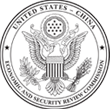Search Results
Research
The Chinese government has a comprehensive, long-term industrial strategy to build internationally competitive domestic firms and replace foreign technology and products with domestic equivalents first at home, and then abroad. This issue brief serves as a primer on the policies in the Chinese government’s toolbox for achieving its technonationalist targets, to include localization, massive subsidies for R&D, government procurement, China-specific standards, foreign investment restrictions, recruitment of foreign talent, state-directed acquisition of foreign technology and intellectual property, and, in some cases, industrial espionage.
Research
In November and December 2017, China’s People’s Liberation Army (PLA) Air Force conducted at least nine long-distance training flights over maritime areas along China’s periphery, continuing a trend that began in 2015. Since 2015, long-distance over-water training has become more frequent, featured a greater variety of aircraft, and extended into areas in which the air force had not previously operated. The long-distance over-water training is part of a broader PLA Air Force effort to transition from a service focused on territorial air defense to one capable of conducting offensive and defensive operations beyond China’s coast. These flight activities potentially challenge U.S. interests by (1) improving the PLA Air Force’s capability to execute maritime missions against the United States and U.S. allies and partners in the region; (2) gathering intelligence against the U.S. military and U.S. allies and partners; and (3) reinforcing claims in maritime disputes and pressuring Taiwan.
Hearings
This hearing will compare and contrast U.S. and Chinese pursuit of next generation connected devices and networks and the implications for U.S. economic competitiveness and national security. The hearing will focus on U.S. and Chinese 5th generation wireless technology (5G) and Internet of Things standards and technology development, U.S. usage of Chinese Internet of Things technologies and 5G networks, and the ability of Chinese firms to collect and utilize data from U.S. consumers through Internet of Things technologies.
Hearings
The Commission’s February hearing on “China’s Military Reforms and Modernization: Implications for the United States” will provide insight into how China’s ongoing military reform efforts and President Xi’s vision for achieving the “China Dream” are shaping PLA long-term defense planning, weapons development, and acquisition programs. The hearing will specifically assess the political and security drivers shaping China’s military modernization efforts; the reformed Central Military Commission’s role in coordinating modernization priorities with the military services; the development of forces capable of conducting joint operations; and implications for the United States.
